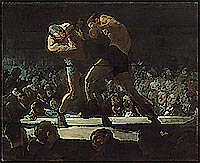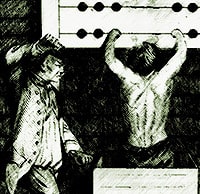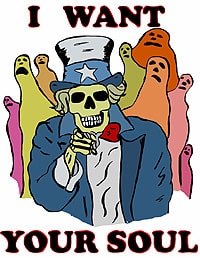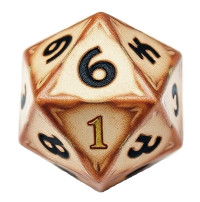Previously posted as ‘Doom Hounds Your Heels’ with revisions.
First published in December 1932, in Weird Tales, a novelette.
First, the Phoenix on the Sword is a five-chapter novelette, which was Howard’s best length. The story is headed by the long entry from the Nemedian chronicles that has headed the various comic series and the first film, with the voice over by Mako. This kind of heading is clutch for off-the-cuff world building, of which Howard was an early innovator.
The first draft of The Phoenix on the Sword was unsold as was the Kull story it was based on, By This Axe I Rule! The second draft of The Phoenix on the Sword differs primarily in three respects.
1. The first draft began with a quote by Rinaldo, the poet, “My songs are torches for a king’s pyre!” In the second draft, this has been replaced by the introduction to the age of Conan attributed to The Nemedian Chronicles, which was a very nice introduction to a fantasy setting and was reviewed in Part I of this series.
2. The first draft goes immediately to a description of the mad poet, Rinaldo, whom Howard seemed somewhat obsessed with, as he shows up in the Kull story, both drafts of this story, and is mentioned in The Scarlet Citadel. There was something about the idea of a poet railing against the government that appealed to the author. In the second draft, Rinaldo is reduced in stature.
3. In place of a description of the conspiratorial poet, we get this for our lead into the first chapter: “Over shadowy spires and gleaming towers lay the ghostly darkness and silence that runs before dawn. Into a dim alley, on of a veritable labyrinth of mysterious winding ways, four masked figures came hurriedly from a door which a dusky hand furtively opened. They spoke not but went swiftly into the gloom, cloaks wrapped closely about them; as silently as the ghosts of murdered men they disappeared in the darkness. Behind them a sardonic countenance was framed in the partly opened door; a pair of evil eyes glittered malevolently in the gloom.”
After two unsuccessful attempts to sell the story of a hero king facing assassins alone in his private space, Howard succeeded in selling the setting instead. I regard this as a big step in his development as a writer, with his sketches of the world of Conan lending it a quality with broader appeal than his other work, which tended to feel like it was a story told in shadows by comparison to the vividness of Conan’s world.
In the first chapter, he establishes this tale as a story of political intrigue and sorcery, with a conspiratorial meeting between the rogue Ascalante and the Stygian sorcerer Toth-Amon. The development of the simple listening slave in the original Kull story into the arch villain, Toth-Amon, who in the unsold story, The God in the Bowl, manages to make an appearance without making an appearance with one of his diabolical pets driving the adventure. The term, sword and sorcery, and exactly when it was applied to Howard’s work, is something I’m not an authority on, but The Phoenix on the Sword is a perfect example of the genre.
The succeeding chapters are headed with poetry, which is a nice touch of Howard’s. His stories that feature poetic chapter headers develop atmosphere immediately in the reader’s mind.
Chapter Two introduces Conan at his desk with a stylus in hand! The famous barbarian’s first appearance in fiction is as a reluctant desk jockey! Conan admits defeat at the hands of a rabble-rousing poet who curses his name and lionizes his predecessor in calls for his downfall. He scoffs at the suggestion that he take action against the poet, assuring his advisor that he will be long forgotten while the poet was yet famous. This is a humane portrait of a mature though brutal warrior, who has seen more of life than most, and has fatalistically come to terms with the realization that he is but a bloody cipher in the march of history—king though he may be.
Chapter Three confirms that The Phoenix on the Sword is more of a supernatural horror story than an adventure, with the meeting between Toth-Amon and a fat pig of a politician, named Dion. This scene is well crafted in the extreme, establishing Toth-Amon as a most effective villain in plot terms, without being overwrought like so many cinematic versions of the diabolical.
Chapter Four is a dream, in which Conan meets an ancient philosopher who anoints Conan—barbarian though he may be—as the torchbearer of civilized empire.
Chapter Five is a scene of elemental human strife in which Conan, betrayed in his sleep, fights maniacally against twenty assassins, even as all 21 of them are targeted by a supernatural horror. The physical action is really well done. Although Howard is not big on biomechanical combat details, he gets the emotion and dynamics of combat. This is probably a legacy of his amateur boxing experience.
Not having read the story in years, I remembered the line “By this axe I rule,” and used it as the inspiration for the novelette titled, By This Axe, not realizing that I had transposed the line from the Kull Story by the same name to this Conan tale. I first reread this before taking another look at Howard’s material for the purpose of this project in a search for the quote from this story, which of course, was not to be found, in writing the dedication to my story, By This Axe. In an odd way, that search for the quote set me on the path to this project.
Back to Howard’s depiction of Conan’s moment of crisis, retained from the Kull story, for Conan was not an axe wielding hero for the most part, but a swordsman—the axe was there. And the author handled it as masterfully as his antagonist. That line though, that I had long carried in my mind, was absent.
What a story—the beginning and end of a fictional hero's storied career in about 20 pages! The impression I take away from The Phoenix on the Sword, is that it would make a great 50-minute film. Conan should not be done in movies or as a TV series, but as a mini-series in three seasons, according to the scheme of the Del Rey three-volume collection I am reading from.
Above all, The Phoenix on the Sword is a tale of Man awakening to the past—of a man of a young tribe awakening to the storied ghost of an elder tribe and discovering a unifying human theme, in that they both faced the same timeless enemy—the moral rot of civilization that saps the vital spirit from us all.
Books by James LaFond











